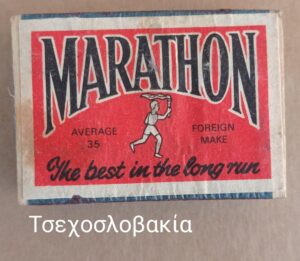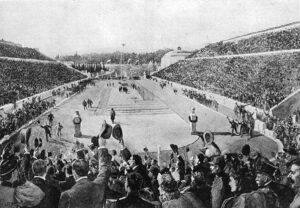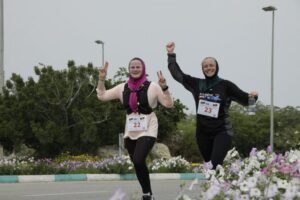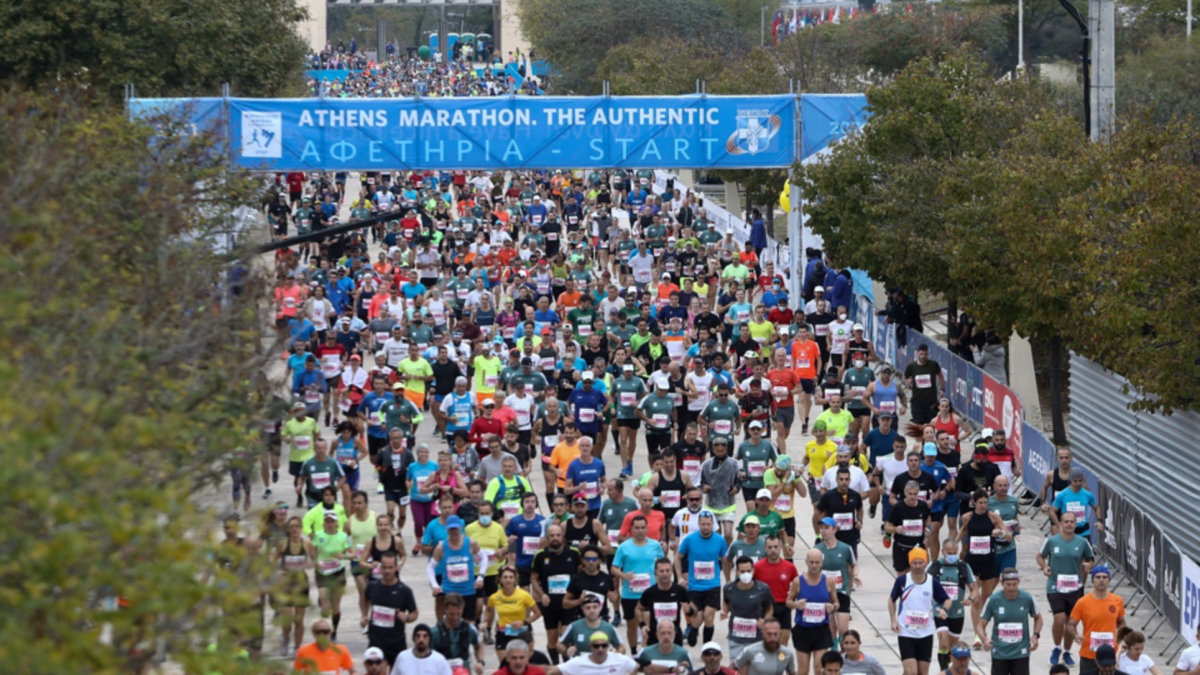There are very few matchboxes depicting the Marathon Road and not in Greek.
 In the “Matches Museum” there is a Czechoslovak-made matchbox from the 1950s that has a depiction of the Marathon Road.
In the “Matches Museum” there is a Czechoslovak-made matchbox from the 1950s that has a depiction of the Marathon Road.
November 13 is the day of the Athens Marathon.
The Marathon Road is a road endurance race, covering an official distance of 42.195 kilometers, included in the modern Olympic sports.
The race owes its name to the historical route of the Athenian soldier who, after the battle of Marathon (490 BC), ran from the battlefield to Athens to convey the victorious news with the word “nenikikamen” (we won). Pheidippides is often identified with this soldier. In reality, however, the name of this soldier remains unknown.
In ancient times there was no “marathon road” as a sport. When the modern Olympic Games became a reality at the end of the 19th century, the founders and organizers were looking for a great event, reminiscent of the ancient glory of Greece. The idea of organizing the marathon race came from the French linguist and Hellenist Michel Bréal, who proposed during the revival of the 1896 Olympic Games in Athens “the repetition of that famous road that the soldier of Marathon had ran”.
 In the Athens Marathon of 1896 the distance covered by the athletes was 40 km. The winner of this race was the Marousiotis Spyros Louis (whose profession was to carry water), who made history!
In the Athens Marathon of 1896 the distance covered by the athletes was 40 km. The winner of this race was the Marousiotis Spyros Louis (whose profession was to carry water), who made history!
The distance of 42.195 meters was later determined on the occasion of the 1908 London Olympics. The distance of 42 kilometers is the distance between Windsor Castle and the Olympic stadium in Shepherd’s Bush in west London. The distance was set at 42 kilometers plus a lap of the stadium which ended up being 42,195 meters, taking into account the best seat for the royal family!
There used to be a short joke about the Marathon: “Marathon in Iran”, given the symbolism of the race. In April 2016, however, was organized the first Marathon in Iran, in Tehran.
The Tehran Marathon, which had the slogan: “I run iran” had its “peculiarities”.
 An unpleasant surprise awaited the athletes. Many had come to Iran specifically for the Marathon, but in recent days the government has forced the organization to ban women from the Marathon and the 20 km race, allowing them to run only 10 km. And that not on a public road, but inside the Olympic park with spectators limited to the finish area only. The mobility of women in the area of the hotel that houses the secretariat is intense and they discuss how to react. Others compromise. Others risk it and choose to run irregularly, next to the men. In both cases, they must cover their bodies completely as prescribed by Islamic dress. And even under these conditions, however, participating in a street race is something groundbreaking for women in Iran.
An unpleasant surprise awaited the athletes. Many had come to Iran specifically for the Marathon, but in recent days the government has forced the organization to ban women from the Marathon and the 20 km race, allowing them to run only 10 km. And that not on a public road, but inside the Olympic park with spectators limited to the finish area only. The mobility of women in the area of the hotel that houses the secretariat is intense and they discuss how to react. Others compromise. Others risk it and choose to run irregularly, next to the men. In both cases, they must cover their bodies completely as prescribed by Islamic dress. And even under these conditions, however, participating in a street race is something groundbreaking for women in Iran.
The second unpleasant intervention of the government in the organization was the removal of the word Marathon from the official name of the race, so the 1st Tehran Marathon became: the 1st International Persian Road. In part, one might say, it is understandable. For example, would the French ever organize a Waterloo Road Race?

